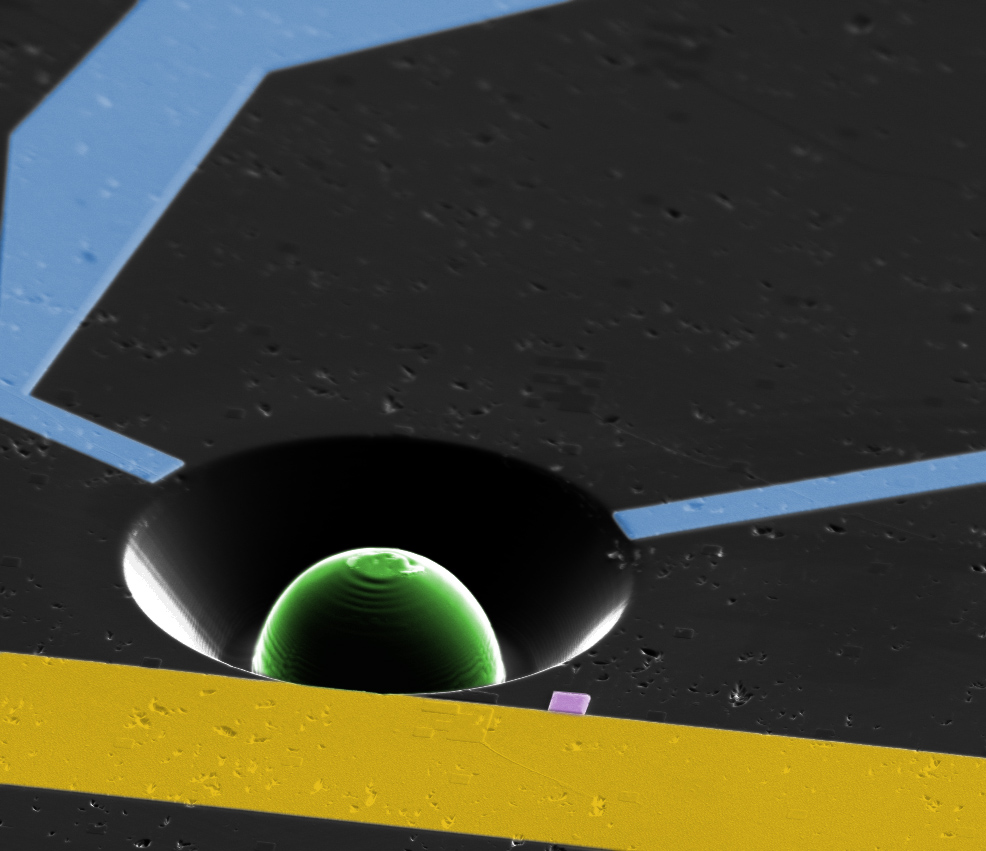Scientists from the Kavli Institute of Nanoscience have brought two atomic nuclei in synthetic diamond into a quantum entangled state. They published their findings on 14 October 2012 online in Nature Physics.
Quantum entanglement is one of the most intriguing phenomena in physics. When two particles are entangled their properties are so strongly connected that they lose their own identity. Measuring both particles yields fully correlated outcomes, even when the particles are very far apart. Einstein famously called this feature “spooky action at a distance”.
Today, quantum entanglement is recognized as a resource for ultra-fast computation, and atomic nuclei in synthetic diamond are seemingly promising building blocks for a quantum computer. These nuclei behave like a tiny magnet (spin). The two possible orientations of the spin (up or down) can be used to encode quantum information. Moreover, a quantum bit or qubit is not limited to just two states, like the transistors of today’s computers, which can only be 1 or 0. A qubit can have several states simultaneously, meaning that certain types of calculations could be performed extremely quickly.
The Delft researchers, who collaborated with a British company called Element Six and researchers from FOM foundation, have been conducting quantum research on diamonds for years. Dr. Ronald Hanson (who supervised the entanglement research) and colleagues published an article in Nature last year describing a technique for obtaining quantum control over the quantum magnetic moment of several atomic-sized impurities in diamond, known as nitrogen-vacancy (or N-V) centers.
By applying a specially designed sequence of high-precision electromagnetic pulses, the scientists were able to protect the arbitrary quantum state of a single spin. A subsequent release stated that they had made a mini-quantum computer, a computer consisting of four qubits. With the breaktrough published this month, the researchers have taken yet another step towards the realization of a real quantum computer.
Demonstration of entanglement-by-measurement of solid-state qubits, Wolfgang Pfaff et al., 14 October 2012 online in Nature Physics.



Comments are closed.